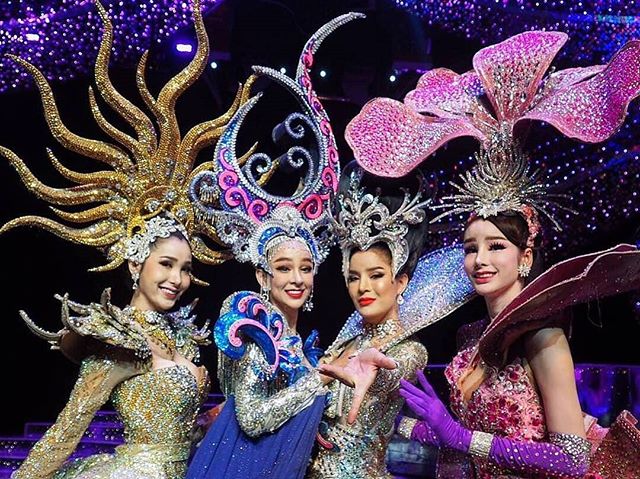Recent Articles
-
 The ladyboy forum is for sale
The ladyboy forum is for saleadmin - Mar 05 2025 12:51 AM
-
 Debunking Common Misconceptions About Ladyboys
Debunking Common Misconceptions About Ladyboysadmin - Apr 28 2023 09:13 PM
-
 How to tell if your ladyboy date is an Escort
How to tell if your ladyboy date is an Escortadmin - Apr 28 2023 09:01 PM
-
 Thai Ladyboys and Buddhism: a complex relationship
Thai Ladyboys and Buddhism: a complex relationshipadmin - Apr 28 2023 09:13 PM
-
 The Ladyboy Entrepreneurs
The Ladyboy Entrepreneursadmin - Apr 28 2023 09:13 PM
Recent Comments
-
 Why do Ladyboys have an obs...
Why do Ladyboys have an obs...michel2023 - May 15 2025 01:57 PM
-
 Why do Ladyboys have an obs...
Why do Ladyboys have an obs...Raipuragency - Oct 10 2024 02:15 PM
-
 Why do Ladyboys have an obs...
Why do Ladyboys have an obs...riyamehra - Sep 28 2024 06:10 PM
-
 Why do Ladyboys have an obs...
Why do Ladyboys have an obs...Laylyt - Sep 26 2024 05:13 PM
-
 Why do Ladyboys have an obs...
Why do Ladyboys have an obs...soniyathakur - Sep 18 2024 03:57 PM
-
 Why do Ladyboys have an obs...
Why do Ladyboys have an obs...GoaEscortsSupriya - Aug 23 2024 02:55 AM
Featured Events
A brief history of Ladyboys in Thai Culture
May 18 2023 12:04 AM |
admin
in Newbie Advice
culture history As the rest of world becomes more accepting and tolerant towards trans gendered person, Thailand would seem to be way ahea,. Thailand’s history of accepting a third sex can be dated back centuries.
As the rest of world becomes more accepting and tolerant towards trans gendered person, Thailand would seem to be way ahea,. Thailand’s history of accepting a third sex can be dated back centuries.Origins of Kathoey Culture
The concept of ladyboys and its roots in Thai history, can be traced back to ancient times, and as far as record go. Kathoeys were traditionally considered to be spiritual beings, often serving as mediums, healers, or shamans, and were revered for their unique abilities. They were highly respected within the community and played an essential role in society.
In Thai folklore and mythology, stories of gender-fluid characters can be found, reflecting the early acceptance and integration of the third gender in Thai culture. One example is the Ramakien, Thailand's national epic, which dates back to the 18th century and features a character named Sangthong, a young prince who temporarily transforms into a woman.

Religion and Ladyboy Culture
Buddhism, the predominant religion in Thailand, has played a significant role in shaping the perception and acceptance of ladyboys within Thai society. Unlike some other religious belief systems, Buddhism does not explicitly condemn or stigmatise transgender individuals. In fact, the Buddhist teachings emphasize compassion, understanding, and non-judgment towards all living beings, regardless of their gender identity or expression.
The third gender is recognised in several Buddhist texts, such as the Vinaya Pitaka, compiled in the 5th century BCE. The Vinaya Pitaka, a foundational text in the Theravada Buddhist tradition, outlines the rules and regulations for monastic life. It includes provisions for individuals who do not fit neatly into the categories of male or female, acknowledging the existence and legitimacy of a third gender. This early recognition within Buddhist scripture has contributed to the relatively tolerant attitude towards ladyboys in Thai culture.
The Emergence of Ladyboy Culture in Modern Thailand
The visibility and prominence of ladyboy culture in modern Thailand grew significantly during the mid-20th century. In the 1960s, Thailand experienced a surge in tourism, with the number of foreign tourists increasing from 336,000 in 1967 to over 1.4 million in 1977. This influx of visitors led to the development of the entertainment industry, including the emergence of go-go bars, beer bars, and ladyboy cabaret shows.
The first Miss Tiffany's Universe, a beauty pageant for transgender women, was held in 1998. This event has since become an annual celebration of ladyboy culture, attracting contestants from across Thailand and increasing the visibility and acceptance of transgender individuals. The emergence of social media has dramatically helped Thailand’s unique ladyboy culture, gain international recognition and admiration.

Ladyboy Rights and Recognition
Despite the cultural acceptance and visibility of ladyboys in Thai society, they have historically faced challenges in terms of legal recognition and rights. It wasn't until 2015 that the Thai government allowed transgender individuals to change their legal gender on official documents. Furthermore, in 2019, the Gender Equality Act was enacted, which provides protection against discrimination based on gender identity or expression.
Nonetheless, there is still progress to be made in terms of legal rights and social acceptance for the ladyboy community. For example, some transgender individuals are still required to serve in the military based on their assigned gender at birth, leading to instances of discrimination and mistreatment.
The ladyboy culture in Thailand has evolved over time, reflecting a unique aspect of the nation's rich cultural heritage. From its ancient origins to its modern-day prominence, ladyboy culture has become an integral part of Thai society. As we strive to understand better and appreciate this unique cultural phenomenon, it is important to approach the topic with sensitivity and respect, recognising the challenges faced by the ladyboy community and acknowledging their historical significance within Thai culture. It’s impossible to imagine a modern day Thailand without it’s rich, unique, and colourful ladyboy culture.
For the dating ladyboys in Thailand we recommend joining Thai Friendly which has hundreds of Thai ladyboys listed.
For dating ladyboys globally we recommend joining My Ladyboy Date which has attractive ladyboys in many Asian and Western countries.
For ladyboy escorts in Asia and Europe, make sure to try Smooci.












0 Comments